The Riotoro Onyx Power Supply Review: 650W & 750W Tested
by E. Fylladitakis on March 23, 2017 10:00 AM EST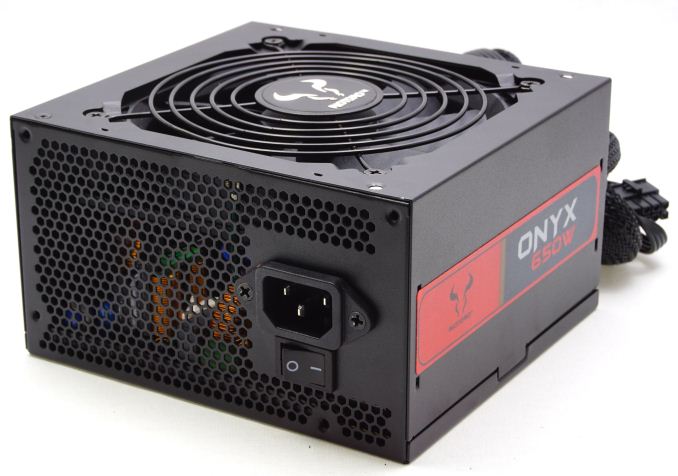
Riotoro is a new player in the PC market, coming into business into 2015. The company was founded by ex-Corsair and ex-NVIDIA employees who possess the experience that is necessary for them to compete in today’s cutthroat markets. They are making slow, cautious moves towards new product releases, trying to maximize their revenue and, as a result, their growth. Their first entrance into the North American market was with the Prism CR1280, an RGB full tower case that we reviewed last April.
In this review we are having a look at Riotoro’s very first PSUs, the Onyx 650W and the Onyx 750W, which are used as proof of the company’s experience and cautiousness. These two PSUs are released in tandem with the 80Plus Gold certified Enigma 750W PSU.
Instead of releasing a high output PSU that would be impressive but targeted at a very small fragment of the market, the two newly released Onyx units are more mainstream and are aiming to be financially competitive - not to take the market with brute force as with other brands. They are 80Plus Bronze certified and targeted towards casual gamers and/or advanced users, where the bulk of today’s home PC revenue comes from. For the time being there are only two versions of the Onyx, with a maximum output of 650W and 750W respectively.
Riotoro Onyx 650W Specifications
| Riotoro Onyx 650W Power specifications ( Rated @ 50 °C ) |
|||||
| AC INPUT | 100 - 240 VAC, 50 - 60 Hz | ||||
| RAIL | +3.3V | +5V | +12V | +5Vsb | -12V |
| MAX OUTPUT | 25A | 25A | 54A | 3A | 0.8A |
| 130W | 650W | 15W | 9.6W | ||
| TOTAL | 650W | ||||
Riotoro Onyx 750W Specifications
| Riotoro Onyx 750W Power specifications ( Rated @ 50 °C ) |
|||||
| AC INPUT | 100 - 240 VAC, 50 - 60 Hz | ||||
| RAIL | +3.3V | +5V | +12V | +5Vsb | -12V |
| MAX OUTPUT | 25A | 25A | 62.5A | 3A | 0.8A |
| 130W | 750W | 15W | 9.6W | ||
| TOTAL | 750W | ||||
Packaging and Bundle
We received the two Onyx PSUs into simple, effective cardboard boxes. The artwork on the boxes is simplistic, but all of the necessary information and specifications are printed onto the sides and rear of the box. Inside the box we found the PSUs simply wrapped in nylon bubble bags, without any polyethylene foam or extra cardboard packaging. While not the best shipping protection for a PSU, but it should be sufficient for the vast majority of cases.
The items bundled with the Onyx PSUs are the absolute minimum that we expect: inside the box we only found the necessary AC power cable, a few cable straps, four black mounting screws and a basic user’s manual. Both units share the exact same bundle, only the manual itself and the number of supplied modular cables differ.
| Connector | Onyx 650W | Onyx 750W |
| ATX 24 Pin | 1 | 1 |
| EPS 4+4 Pin | 1 | 1 |
| EPS 8 Pin | - | - |
| PCI-E 6+2 Pin | 2 | 4 |
| PCI-E 8 Pin | - | - |
| SATA | 6 | 9 |
| Molex | 3 | 6 |
| Floppy | 1 | 1 |
The Riotoro Onyx PSUs are semi-modular, with the ATX and EPS cables hardwired onto the units, with the rest of the connectors on removable cables. All of the wires and connectors, including those of the hardwired cables, are black. The ATX cable is wrapped into black nylon sleeving, while the rest of the cables are “flat” ribbon-like cables. The 750W version has two extra PCI Express connectors, plus extra SATA and Molex connectors. Technically, the power rating difference does not really justify such a vast difference on the number of connectors, suggesting that Riotoro simply wanted to differentiate the target group of their two models.


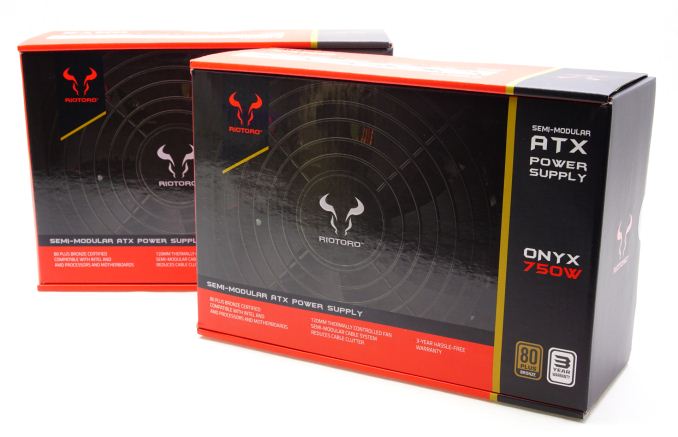
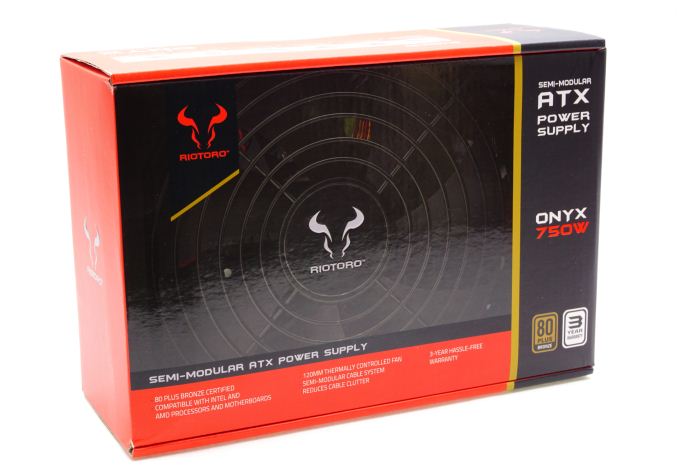
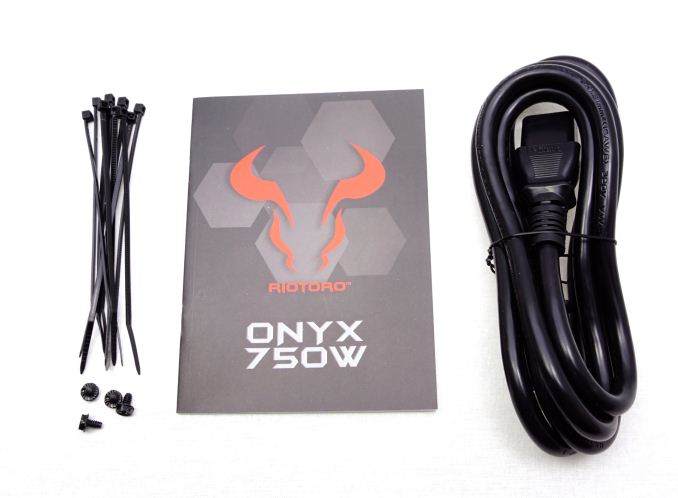
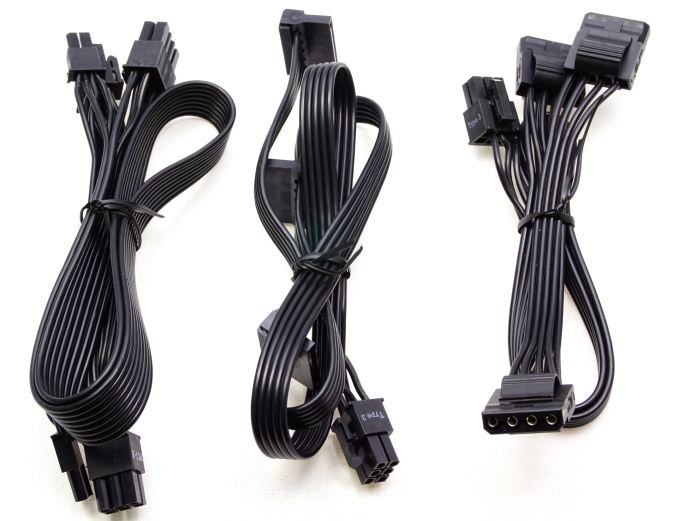








32 Comments
View All Comments
Cellar Door - Wednesday, March 29, 2017 - link
Nobody cares that you had a PSU fail - there are plenty of new companies that make great products and there are plenty of old companies that make bad products.Aaannnndd nobody cares what you are going to do.
t4murphy - Sunday, March 26, 2017 - link
Same here. Been using my 750 silencer for 9 yrs. Couple SLI builds and MoBo no. 5 still going strongBrokenCrayons - Friday, March 24, 2017 - link
Aw, be nice to them. They get a lot of unwarranted abuse from people already.bigboxes - Friday, March 24, 2017 - link
Yeah, I bought a FSP (Fortran) 700 watt power supply in 2006 for my first dual core build. I could've swore that AnandTech had recommended the damn thing. Can't find a link to support that. Guess my memory is going. I tried out FSP as alternative when Antech was going through their QC issues. That PSU lasted maybe a year and then died in a puff of smoke. Was so pissed. Lot of money down the drain. I had bought a Seasonic PSU for my file server and liked it enough that I went to Seasonic for my main rig on my next build. I spend the money now for reliability as my boxes remain up 24/7. No more unknown cheap knock off brands for boxes.kn00tcn - Wednesday, March 29, 2017 - link
fsp is known to be one of the highest quality makers together with seasonic, both of them are suppliers to other brands like corsairyou people with your ignorance & single model failure stories that somehow represent an entire brand...
lefizz - Monday, March 27, 2017 - link
I bought a Tagan when they first came out probably based on the review. 18 months laters in took out my motherboard and cpu. Probably £400 worth of damage, luckily i was next to it when it failed or else i could have started a fire.On a side not i was working in an studio in London in the early 2000s and a few of the Dell workstations went up in smoke in spectacular fashion from damaged USB ports on the front. On one occasion one literally filled the studio with smoke in the 5 seconds it took for me to turn around and turn the machine off. It was a big studio, like a smoke bomb going off.
rocky12345 - Thursday, March 30, 2017 - link
I. had the same 700 watt Tagan was a great PSU. 2007-2014 I got my money's out of it. Heck it powered a Q6600@3.8Ghz Geforce 9800 GT ,Radeon HD 4870x2,Georce 580 & 680 GTX cards all overclocked over the years. What finally got it was a spider crawled into it and zap a flash of light and system went off.I took the cover off that's where I seen fried spider lol. I cleaned it up plugged it into a junker system and it worked fine. It worked two more years after the short out. Actually it still works I just upgraded to a newer unit. So either you got a bad unit or it was always running hot as the fans where small on those units. I was bummed when I found out they were gone.
DanNeely - Thursday, March 23, 2017 - link
BFG lasted from 2002 to 2010,when bought your card (2008 or later) they were a well established and highly recommended company at time; not an unknown upstart. And if their lifetime warranty was extravagant EVGA and XFX were both offering IIRC 5 years at the time. Both of the latter reduced theirs because of, and IIRC BFG was broken by, the rise of GPU compute and Crypto Coin mining resulting in much higher lifetime load times and consequently much higher than budgeted for failure rates.DanNeely - Thursday, March 23, 2017 - link
The really long warranties were also semi-supported for by nVidia insisting on card makers taking large numbers of low end GPUs to get full access to the premium parts. This stuck them with more budget cards than they could easily sell, a number of them were used up providing warranty replacements for similar performing older high end cards. eg my GTX6800 was replaced with a GT8500 when 3 or 4 years old.feelingshorter - Thursday, March 23, 2017 - link
I owned a BFG 6600GT and that dates back to 2005 and then bought a 8800GT as well, which was before compute or CUDA cores. Wasn't until the 8800GTX that CUDA cores even came on the market. I don't even remember any notable use for compute back then, even wikipedia says Bitcoin was founded in 2009 and earliest reviews for the 8800GTX was 2006. Feels like BFG failed due to the warranties because GPUs start to fail en mass right after 2 years more so than over usage of compute for mining.